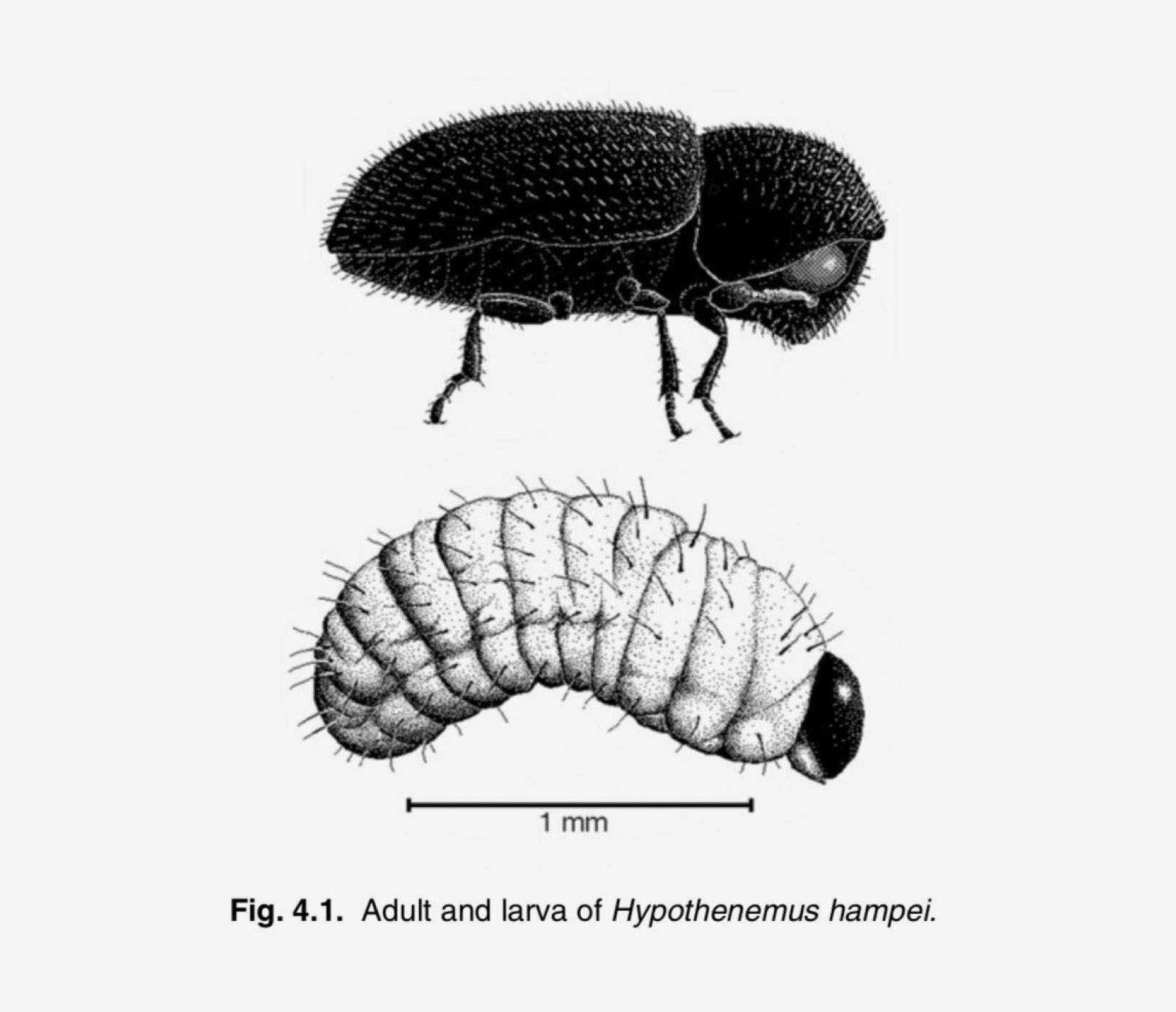Coffee berry borer is widely known as la broca. This translates to ‘drill bit’ in English, which describes exactly the kind of damage these beetles are capable of inflicting on coffee beans. The female beetle, which is about 1 mm wide, burrows into cherries through the ‘terminus hole’ at the very tip. She then tunnels through the parchment and into the bean inside and lays as many as 70 eggs inside the tunnel. Larvae hatch inside the beans and will continue to consume parts of the bean, with males never leaving the cherry in their life cycle. Females can fly and can infest numerous cherries over their 5–6-month life span (D. F. Waterhouse & K. R. Norris, 1989).
The coffee borer prefers lower altitude arabicas and rarely does any severe damage above 1370 metres. Furthermore, this species has never been found above 1680 metres elevation. The first field recording of the beetle was from Liberia on the coast of West Africa by O. F. Cook in 1897, and discoveries were reported in Indonesia as early as 1904. It was discovered in Brazil in 1922 and by the 1970s had made it to Guatemala (J. M. Waller et al, 2007). By September of 2010 it had made its way to Hawaii, where farmers were reporting losses of 20–30%.
Beans can be almost entirely consumed by the larvae and will often fall from the tree. If they don’t fall they are likely to rot due to bacterial damage after an attack, so an infestation can mean huge commercial losses. Just in Brazil, the Economist estimates the country spends USD $300 million per year controlling la broca. Roasters will be able to identify affected beans that do make it to market because, even with only partial damage, they have a distinctive blue-green staining (McNutt 1975).
 Source: J.M. Waller et al,
Source: J.M. Waller et al,
